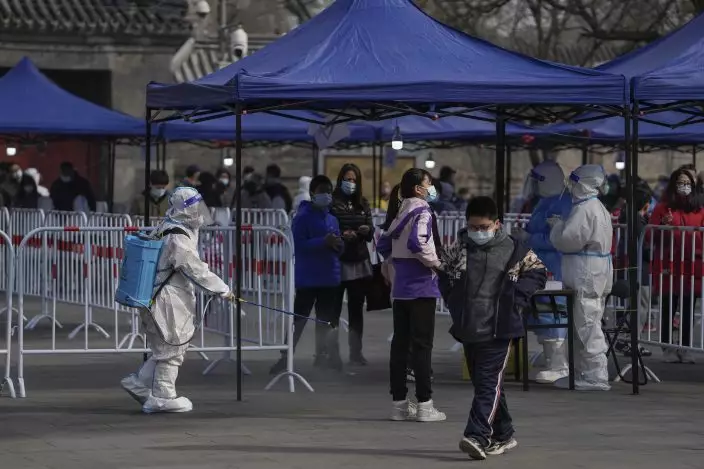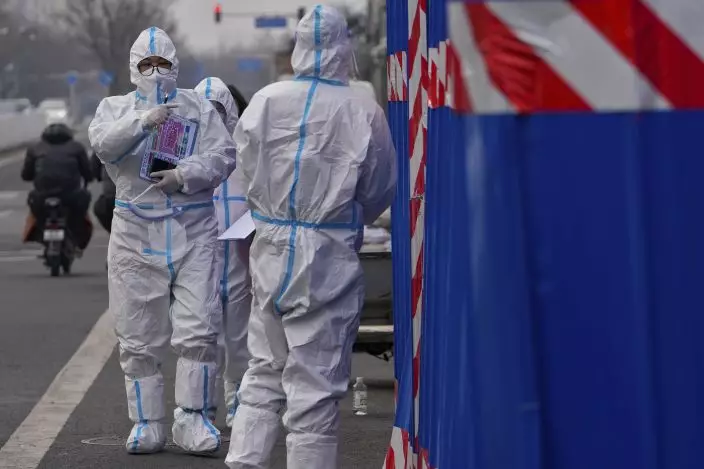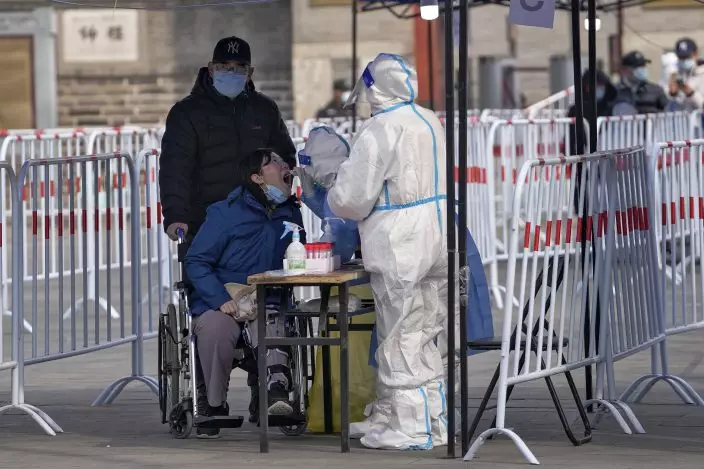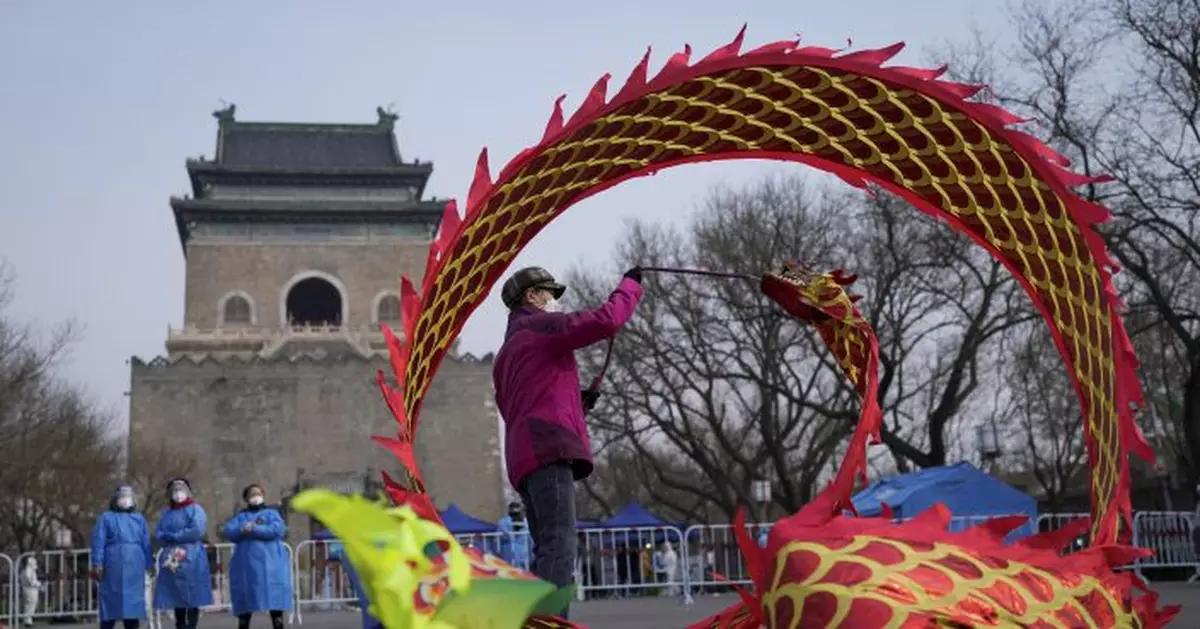The number of new coronavirus cases globally increased by 7% in the last week, driven by rising infections in the Western Pacific, even as reported deaths from COVID-19 fell, the World Health Organization said.
There were more than 12 million new weekly cases and just under 33,000 deaths, a 23% decline in mortality, according to the U.N. health agency’s report on the pandemic issued late Tuesday.
Confirmed cases of the virus had been falling steadily worldwide since January but rose again last week, due to the more infectious omicron variant and the suspension of COVID-19 protocols in numerous countries in Europe, North America and elsewhere.

A worker wearing a protective suit sprays disinfectant as residents get tested for the coronavirus at a site setup outside the Drum Tower, Wednesday, March 23, 2022, in Beijing, China. A fast-spreading variant known as "stealth omicron" is testing China's zero-tolerance strategy, which had kept the virus at bay since the deadly initial outbreak in the city of Wuhan in early 2020. (AP PhotoAndy Wong)
Health officials have said repeatedly that omicron causes milder disease than previous versions of the coronavirus and that vaccination, including a booster, appears highly protective.
The Western Pacific remained the only region in the world where coronavirus cases are rising, reporting a 21% jump last week, continuing weeks of increase. According to figures from last week, the number of new infections in Europe remained stable and fell everywhere else.
WHO cautioned that with many countries dropping widespread testing programs, many infections are likely being missed and new case numbers should be interpreted cautiously.

A health worker wearing a protective suit holds a map of sealed control area asks a security guard to open a doorway to a barricaded community which was locked down for health monitoring following the COVID-19 case detected in the area, Wednesday, March 23, 2022, in Beijing, China. (AP PhotoAndy Wong)
In recent weeks, COVID-19 cases inched upward across Europe, prompted by the more infectious BA.2 subvariant of omicron and the relaxation of nearly all public health measures.
WHO Europe chief Dr. Hans Kluge said restrictions in numerous countries across the continent had been lifted “brutally - from too much to too few,” noting that in recent days, cases were rising significantly in the U.K., France, Italy and Germany.
Last week, British health minister Sajid Javid said U.K. residents should brace for a jump in COVID-19 infections but that the country was still “in a very good position” due to its high vaccination levels.

FILE - Two people wearing masks walk in Regents Park in London, Monday, March 23, 2020. (AP PhotoFrank Augstein, File)
Meanwhile, China's health authorities this week reported the first coronavirus deaths in more than a year as the country battles its worst outbreak since the coronavirus was detected in Wuhan.
The semi-autonomous city of Hong Kong is also entrenched in a deadly wave of COVID-19, and the city of 7 million has recorded more deaths than mainland China during the pandemic.
Hong Kong Chief Executive Carrie Lam said this week that authorities would consider relaxing some of its strict pandemic measures as cases begin to fall after weeks of rising cases overloaded hospitals and cemeteries.

A woman gets a throat swab for the coronavirus at an outdoor testing site setup outside the Drum Tower, Wednesday, March 23, 2022, in Beijing, China. A fast-spreading variant known as "stealth omicron" is testing China's zero-tolerance strategy, which had kept the virus at bay since the deadly initial outbreak in the city of Wuhan in early 2020. (AP PhotoAndy Wong)


